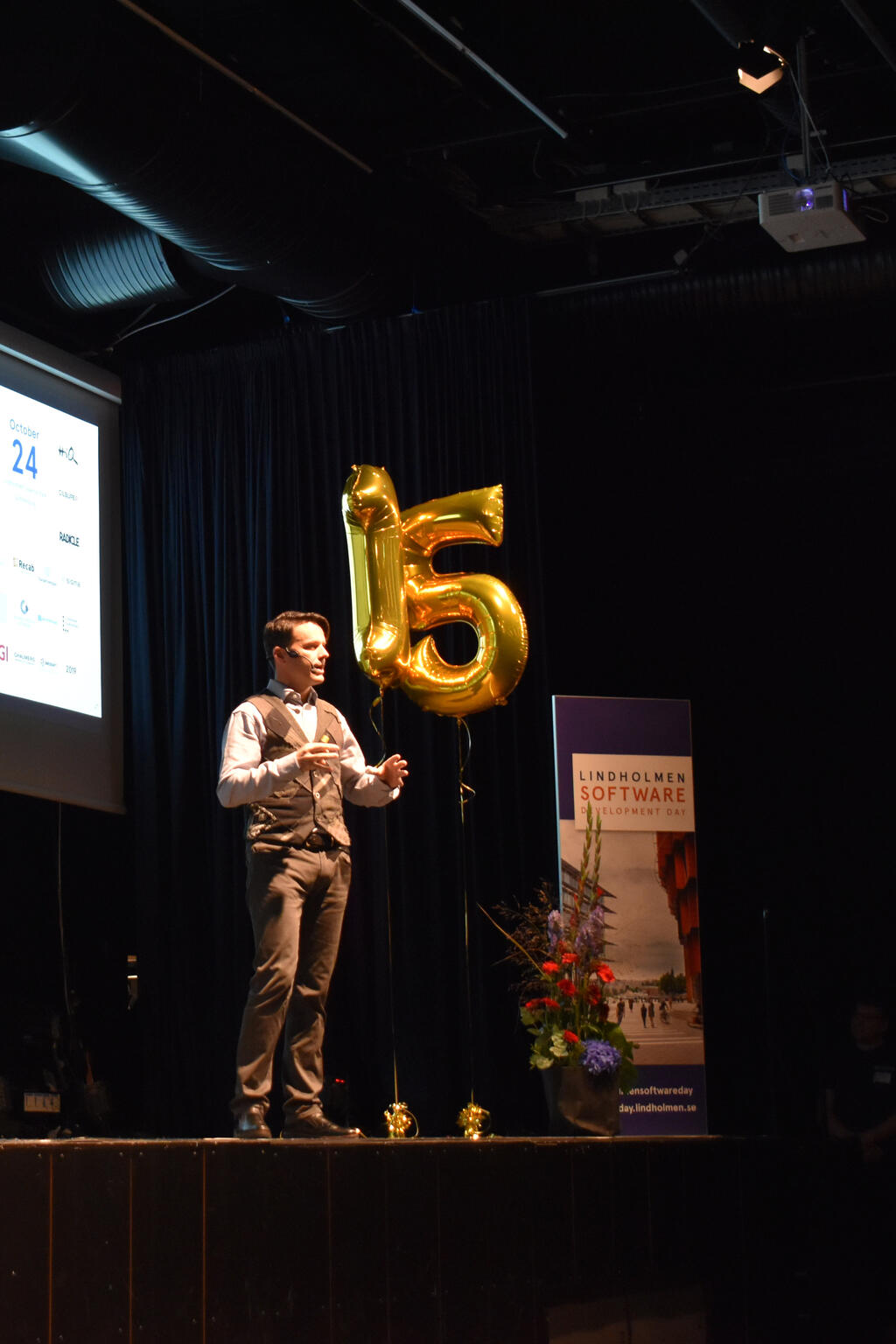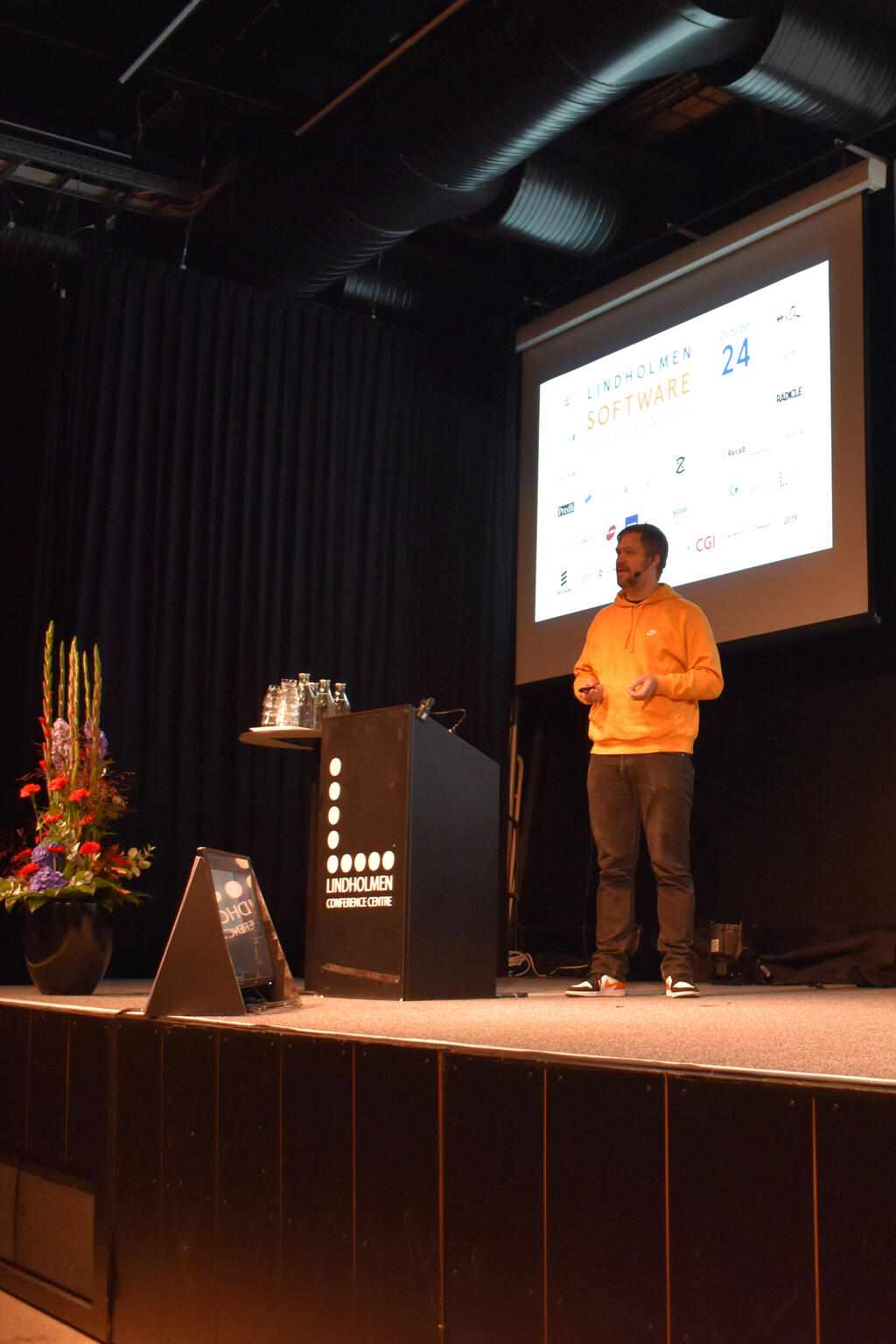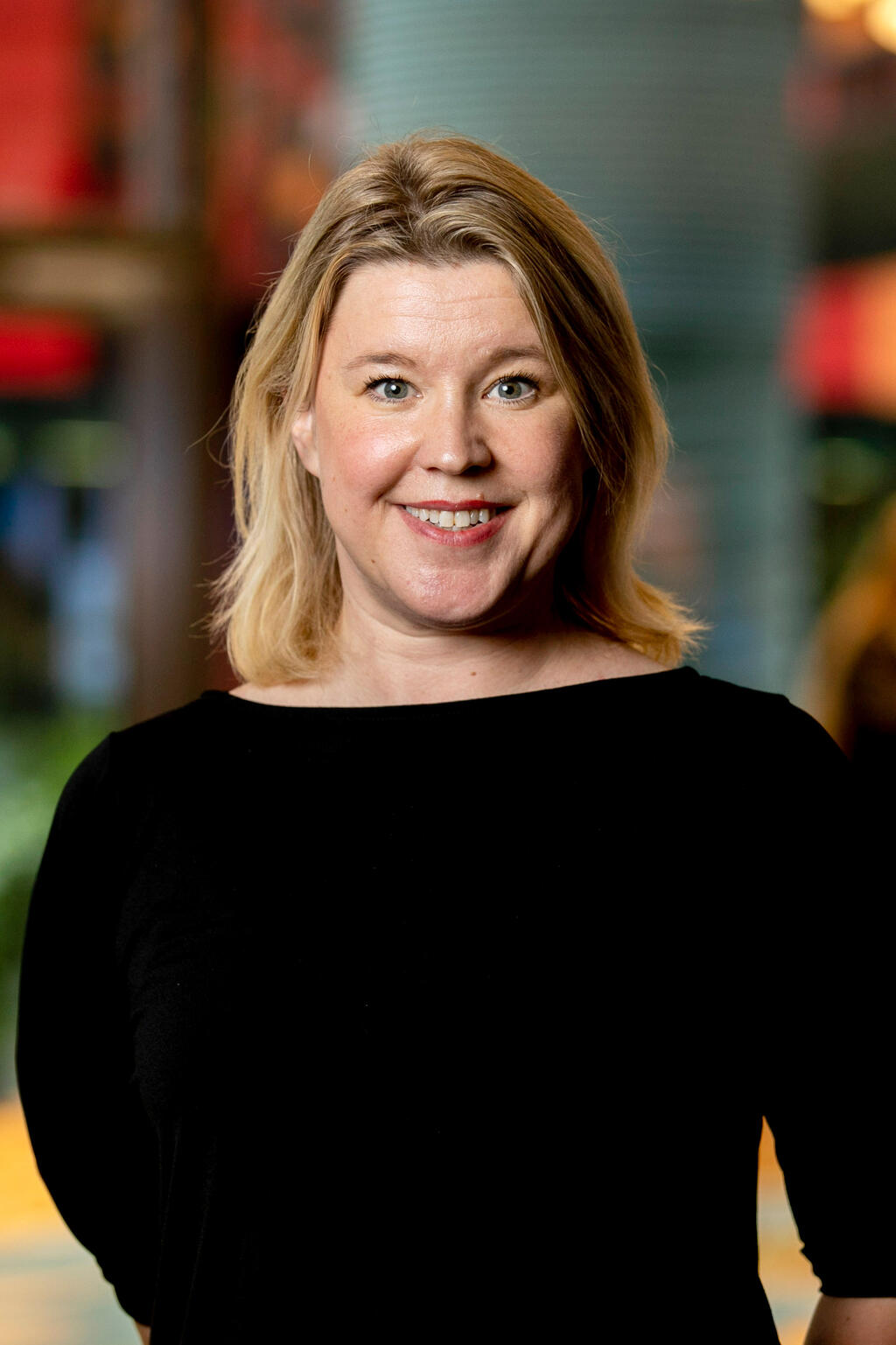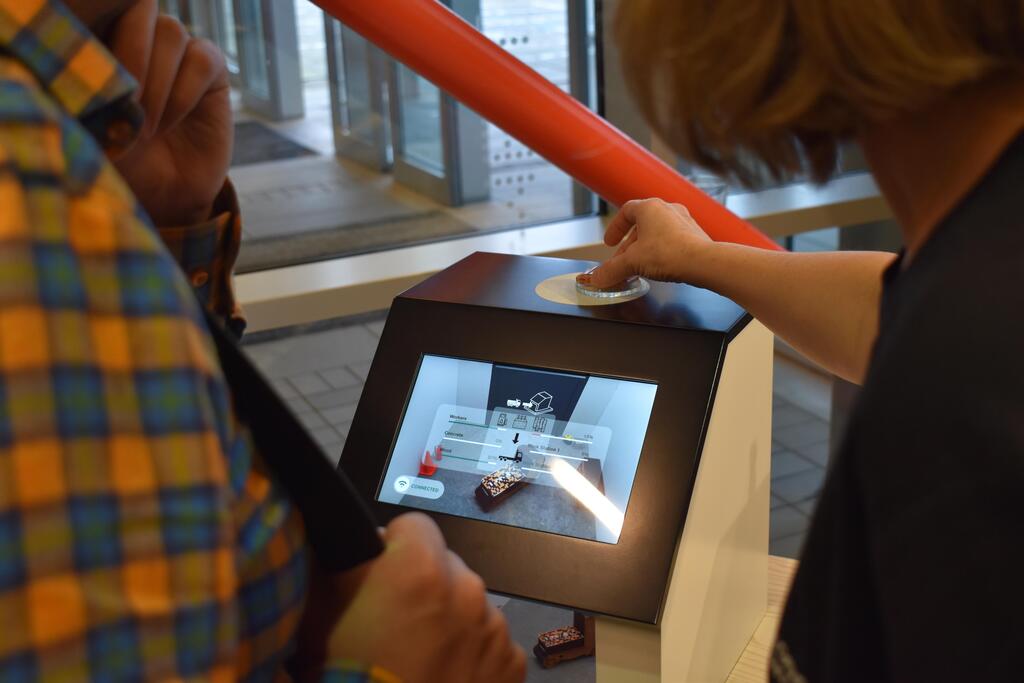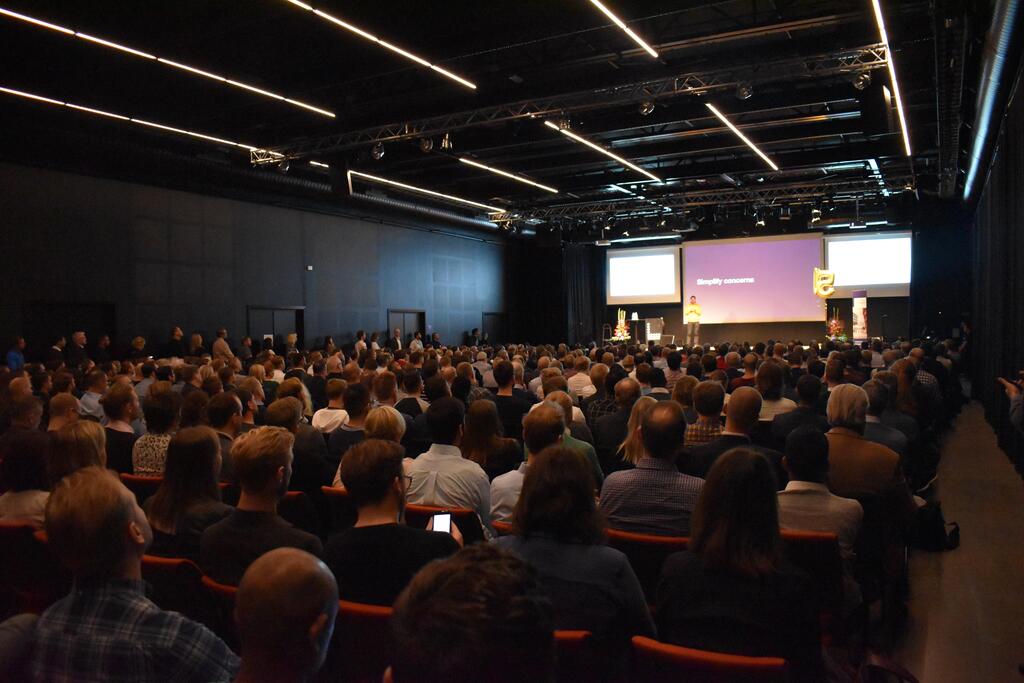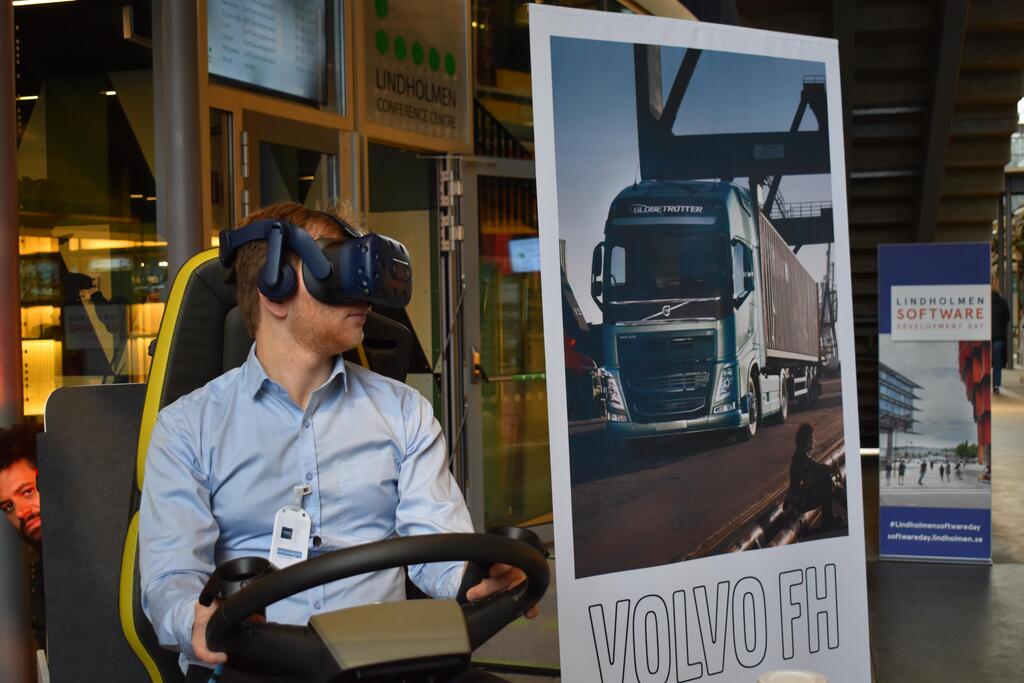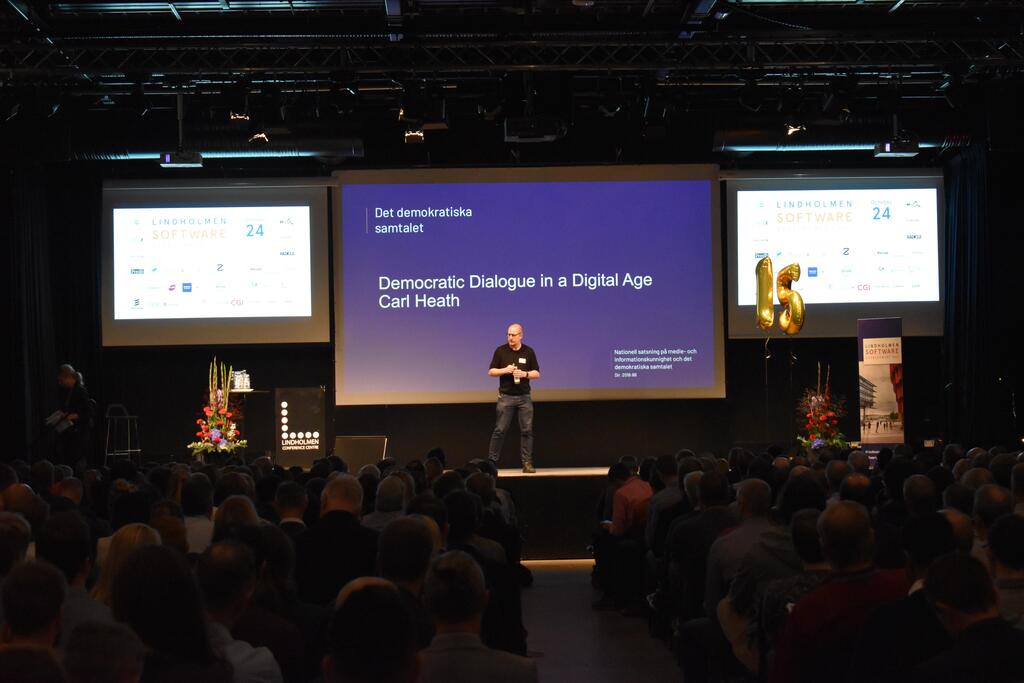Simplicity - the new innovation
Around 800 people gathered for Lindholmen Software Development Day. This year, the event celebrated 15 years - an impressive number. Over the years the event has grown significantly, both in number of participants and engagement. It has provided numerous opportunities for forming new ideas and partnerships and showcased a wide array of new tech.
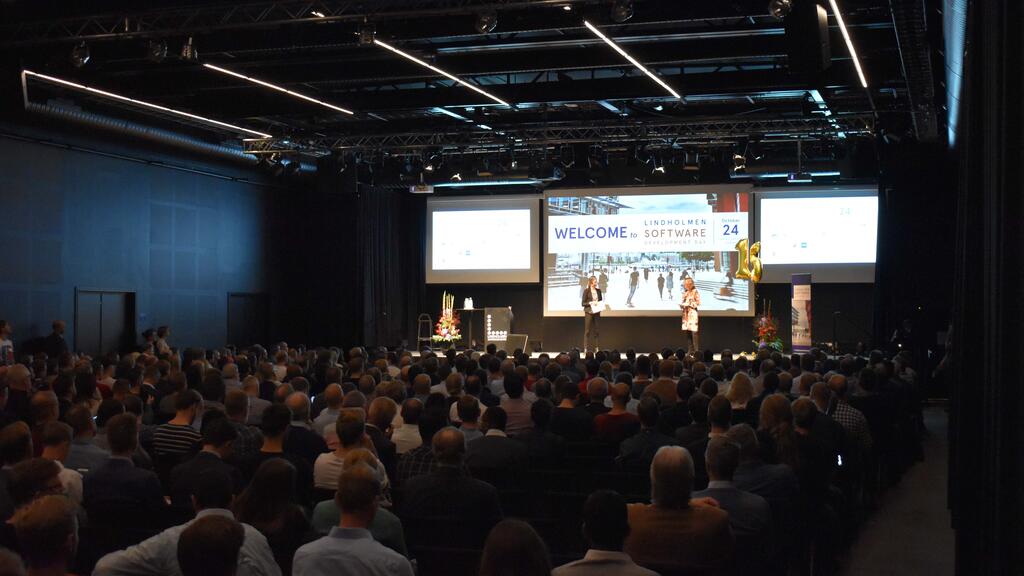
In 2019 the event focused on the packaging of all the new innovation under the theme 'Simplicity - the new innovation'.
In a time when your smartphone is several million times more powerful than the computer that flew the Apollo spaceship to the moon, the importance of creating usable devices and services is huge. But simplicity is not only important for the end-users, it also has the ability to drive both innovation and business. This was the focus for Lindholmen Software Development Day 2019.
Christopher Price, Head of Ericsson Software Technology, opened his presentation on 5G and why an open source ecosystem simplifies innovation by underlining the theme of the year:
"Simplicity drives innovation. It is the art of how to do things well", Christopher Price said.
Ericsson is currently at the forefront of developing the new 5G technology. Through 5G the end-users will get faster, more stable mobile broadband with higher volumes of data, which is obviously great for the consumers, but the potential 5G brings to the table is even greater. It enables new steps to be taken within the fields of transportation, logistics, manufacturing, autonomous robotics, remote operations and smart surveillance, to name but a few. Real-time control and reliability will be vastly improved.
A key factor for this to be successful is open source. According to Ericsson, it is the best way of moving forward, bringing life to new technologies.
"5G needs to be open. 5G needs to be accessible", explained Christopher Price.
Spotify - one enormous, simple system
A company that has grown into a giant over the last couple of years is Spotify. Niklas Gustafsson is their Chief Architect and he showed the attendees their way of grasping their enormous system. As he showed a map of an uncountable number of dots, all linked together, he explained that their 280 development teams, consisting of 1,500 engineers, are all building the same system. But they do it in their own universes.
For Spotify, decoupling has been the way forward. This allows them to move forward in a simple way at the same time as their system grows beyond a graspable size.
"We don’t even know how many services we have", said Niklas Gustafsson, and continued:
"One of the big takeaways is that you have to sacrifice that big, holistic viewpoint."
Their micro universes all contribute to an interconnected system, allowing them to be fast in both implementing new services and fixing problems. By working like this they simplify concerns; everyone can focus on their own work and the API connected to it and they are able to deploy new things whenever they want, without having to consider the other universes. They can actually have as many as over 600 deployments per day - without most needs of coordination.
Equality and fairness - it should be simple
Two aspects of simplicity within tech and innovation concern equality and fairness. This was highlighted by Anna Kazakova Lindegren, Data Scientist at IBM and Chairwoman at PyCon Sweden, and Malin Frithiofsson, Head of Community Management at Chalmers Ventures and co-founder of Alterity think tank.
Anna Kazakova used the infamous Amazon AI recruitment case as a starting point, explaining how their machine learning tool learned to identify and score women lower in their recruitment processes. When this was discovered, Amazon had a big price to pay. They were publicly embarrassed and questioned, which led to a drop in their share prices, as well as losing them goodwill and brand value
Teaching AI to be fair in these matters demands a lot of metrics, but it is doable:
"You can set it straight and learn the machine to stop defining people as privileged and underpriviliged, Anna Kazakova Lindegren said and pointed to different tools, IBM’s open source AI Fairness 360 and Watson OpenScale."
Through these tools, fairness is given a better chance to play its obvious role in innovation. And quality should also have its place in the centre of innovation.
Malin Frithiofsson talked about the lack of women and a female perspective in lots of innovation and in the tech industry. The cases where women are left out of processes are numerous: voice recognitions are usually optimised for men, female crash test dummies are just downsized men without the right biology, and conversation motors that won’t recognise abortions but can lead you to prostitutes.
"This is not at pipeline issue - it’s a cultural problem. The way we tend to talk about tech is that not enough women are interested. That is a comfortable way of saying it. Women are actually leaving the tech industry. 42 % are leaving in five years and one of two women studying computer science are leaving during their first semester. Piping more women in won’t solve it", said Malin Frithiofsson and later added:
"Examine your purpose and adapt your goals accordingly. Diverse teams are more innovative and smarter. But if that is the only reason you are working with diversity, I think you are going to fail."
It is possible to get women to stay in the industry, but it will be expensive for some, since many companies have a bigger party budget than diversion budget. But it has to be done, according to Malin Frithiofsson:
"Equality in tech is a democracy issue. Tech is no longer an option but the people behind it are not elected in a democratic process. So the people in the room when new innovation is made, have a huge responsibility. Women are needed in the business, not least to make sure that the men trying to act in a bigoted way or keep missing the female perspective won’t be left alone in the important processes that are tech."
Simplicity through low- and high-tech
Simplicity can come in different shapes. One is a rather low tech version, like cameras. Hanna Maurin Söderholm, Assistant Program Manager for Prehospital ICT Arena, PICTA, was one of the presenters that gave us some insights on this subject.
Through implementing video support in prehospital stroke care, i.e. the ambulance, and connecting the cameras to expert stroke physicians at the hospital, they have found a new way of providing the right, crucial care for stroke patients in a much faster way. They have bridged competences and fought a lack of IT systems and created a life-saving system that works in a simple way.
At the other end of the spectrum we find a new chip, the U3 chip in Apple smartphones. This allows dramatically increased GPS tracking, greater navigation and enables your phone to feel the way you are facing. And it can keep track of your items through non-traceable tags and build AR/VR maps of indoor spaces. This could mean highly improved services, if you are willing to be tracked.
These were just a few of the things that were highlighted at Lindholmen Software Development Day and we look forward to seeing you there again next year!
Please help us make the even better by filling in the evaluation form
